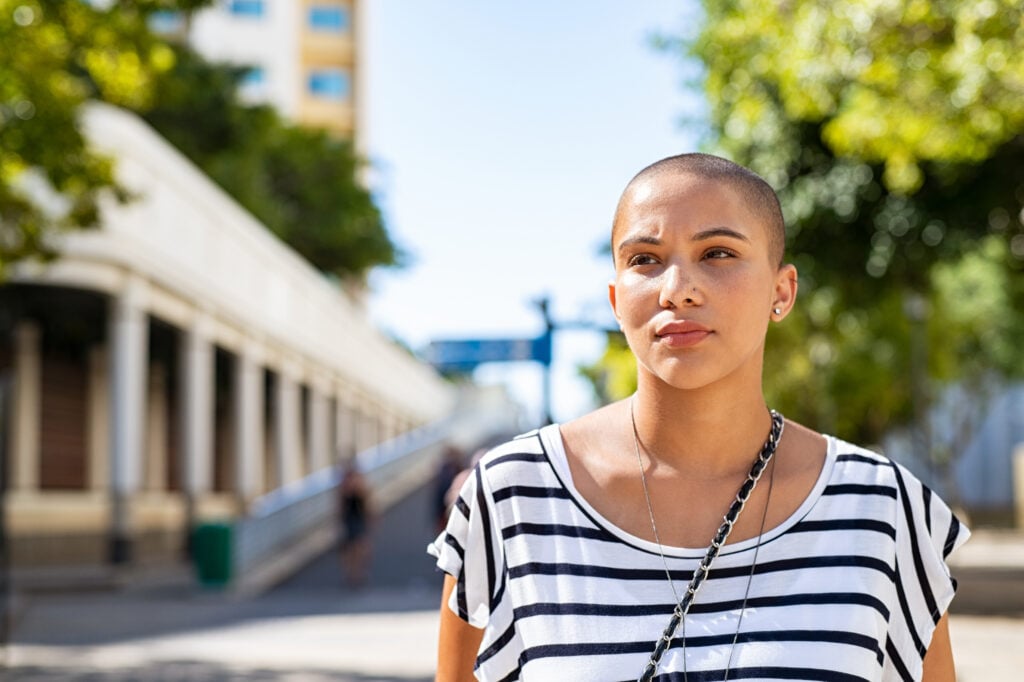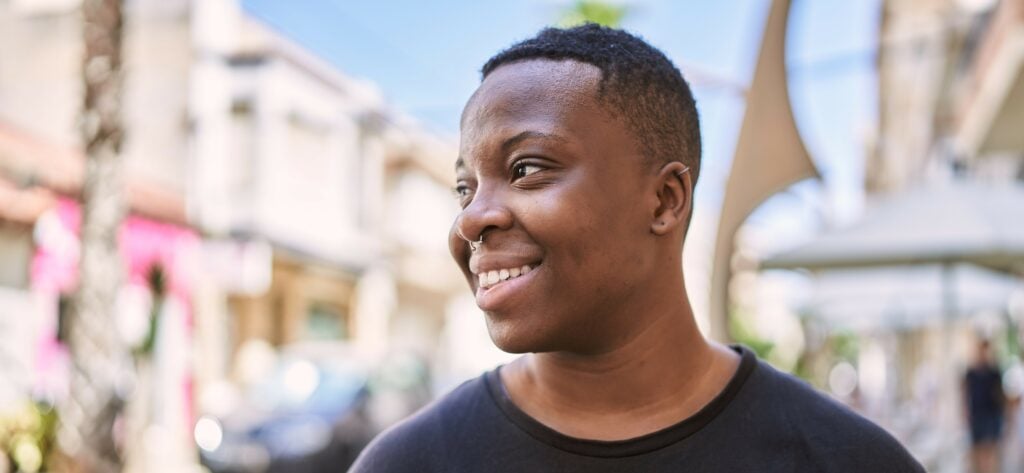Internalized homophobia, biphobia, and transphobia
Reviewed by Susan Radzilowski, MSW, LMSW, ACSW

What do these terms mean?
“Homophobia,” “biphobia,” and “transphobia” all describe fear of, dislike of, or prejudice against LGBTQIA+ people. LGBTQIA+ stands for “lesbian, gay, bisexual, transgender, queer (or questioning), intersex, and asexual,” with the plus sign covering additional labels such as nonbinary or pansexual.


- Homophobia refers to prejudice against gay men or lesbians.
- Biphobia is a term for prejudice targeting bisexual people.
- Transphobia describes prejudice against transgender or gender nonconforming people.
Homophobia, transphobia, and biphobia are considered “internalized” when an LGBTQIA+ person absorbs negative societal attitudes, oppression, and stigmas and develops negative beliefs and feelings about their own gender identity or sexual orientation.
Internalized homophobia, biphobia, and transphobia all have devastating consequences, so it’s important to recognize signs of them and get help.
What causes internalized homophobia, biphobia, and transphobia?
Culture, family, friends, belief systems, stereotypes, biases, and other external factors can all influence how people feel about themselves and others. When LGBTQIA+ people are surrounded by negative messaging about their identity, they may internalize harmful feelings and beliefs.
Heteronormative culture
Many cultures in the world are “heteronormative,” meaning they promote heterosexuality and cisgender identity (when your gender identity matches the sex you were assigned at birth) as normal while labeling other sexual orientations and gender identities as unnatural, wrong, or offensive. If you grow up in these environments and aren’t heterosexual or cisgender, you may have a hard time coming to terms with your sexuality, especially if you feel pressure to come out.
“Coming out” means telling people you’re LGBTQIA+. This process often takes place over time, rather than as a single event. Many people come out when they’re in high school or college, but you can do it at any age.
There are countless heartbreaking stories of gay, lesbian, bisexual, and trans people who’ve experienced rejection from loved ones or community members after coming out.1 Knowing this can make it difficult to accept your own sexuality and come out yourself.
Communities and belief systems
In an already heteronormative culture, some communities ostracize LGBTQIA+ people even more. A wide variety of religious groups and political parties have ideologies that reject lesbian, gay, bisexual, and trans people.
While not all religious communities reject gay people, many do. Their members may consider LGBTQIA+ people sinful or otherwise immoral. Political parties who share membership with these religious groups often adopt homophobic and transphobic beliefs and translate them into legal policy.
LGBTQIA+ people who otherwise agree with the ideologies of these communities or political parties can be susceptible to internalized homophobia, biphobia, and transphobia. It can be very difficult to accept your sexuality when you’re part of a community that doesn’t.
Stereotypes and biases
Stereotypes and biases involve every demographic, and LGBTQIA+ people are no exception. Many people have preconceived notions about gay people’s lifestyles and expressions; internalized homophobia can result when gay people don’t want to assume these stereotypes.
Some political parties, meanwhile, actively promote negative stereotypes to advance harmful agendas. In the US, for instance, conservative groups have misrepresented transgender people as predators and tried to pass laws preventing them from using the right bathroom for their identified gender.2 There’s no evidence to support this predator myth, and it oppresses and marginalizes transgender people even further.
While heteronormative societies label many LGBTQIA+ stereotypes as undesirable, others are celebrated in pop culture. Many movies and TV shows, for instance, feature the stereotype of a gay friend who serves as a flamboyant cheerleader of sorts to a straight woman. When a person doesn’t fit these idealized stereotypes, they may face internal conflict.
Heterosexism
“Heterosexism” is discrimination against LGBTQIA+ people based on the idea that heterosexuality is the only acceptable, normal sexual orientation. Heterosexism uplifts people who are cisgender and heterosexual while putting down everyone else. This makes it harder for LGBTQIA+ people to accept themselves, and for society to accept them as well.
One form of heterosexism can be seen in the idea that any LGBTQIA+ representation is inherently hypersexual, explicit, or inappropriate. Parents likely won’t object to a local library carrying a young adult novel with a description of a heterosexual couple kissing, for example. But they may call for censorship or removal of a YA book in which a lesbian couple kisses or a character is trans.
Can you be LGBTQIA+ and homophobic, transphobic, or biphobic?
The short answer is yes, you can. You may have internalized anti-LGBTQIA+ beliefs and attitudes due to the reasons listed above, and you may act on those prejudices either with or without realizing.
It’s also possible that you’re LGBTQIA+ but deny that part of your identity because:
- You dislike or resent the common labels and stereotypes associated with your sexuality.
- You’re afraid your relationships with your loved ones will end because they’re homophobic.
- You’re afraid of facing discrimination because of your sexuality.
- You fear violence or emotional trauma from homophobic family members, friends, or community members.
Signs of internalized homophobia, biphobia, and transphobia
Internalized anti-LGBTQIA+ feelings and beliefs can show up in many different ways, depending on your lived experience. Signs can include:
- Secrecy and self-isolation
- Negative feelings toward yourself and your sexuality or gender identity
- Discomfort and judgment around LGBTQIA+ topics, events, or people
- Distancing yourself from expressions of sexuality
- Denying, rejecting, or repressing your sexuality or gender identity
- Losing your sense of self
- Hating yourself for being LGBTQIA+
Mental and emotional health effects
Internalized homophobia, transphobia, and biphobia can significantly impact your mental and emotional health. They can lead to depression and other mental health issues. Effects can include:
- Thoughts of suicide and self-harm
- Chronic stress
- Failed or strained relationships
- Secrecy about sex
- Risky sexual behaviors
Treatment and care
It’s not healthy to hate any part of yourself, including your gender identity and sexuality. Many treatment options can help you overcome internalized negative beliefs and feelings, including cognitive behavioral therapy (CBT), couples therapy, family therapy, and other forms of talk therapy.
Discussing your struggles with a therapist who specializes in LGBTQIA+ issues can help you accept yourself and maintain healthy relationships with your family, friends, and romantic interests. Visit our directory to find a therapist near you.
Get help now
If you’re in crisis and need help immediately, call or text one of these helplines for free, confidential, 24/7 support:
- 988 Lifeline: Call or text 988.
- Crisis Text Line: Text HOME to 741741.
- The Trevor Project: Call 1-866-488-7386 or text START to 678-678.

Sources
About the author
The editorial team at therapist.com works with the world’s leading clinical experts to bring you accessible, insightful information about mental health topics and trends.
Related articles

Sex, intimacy, and mental health
Safe, consensual sex between adults is a normal, healthy part of life. Learn...

What is LGBTQIA+ imposter syndrome?
Even if you’re confident in your identity, this type of imposter syndrome may...

When your religion rejects you, what comes next?
Healing from religious trauma can be especially hard for LGBTQIA+ people, who...

What is gender-affirming mental health care?
Whether you’re exploring your own gender identity or wondering how to support...
